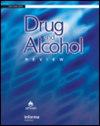Relationships Between Motives for Cannabis and Cannabidiol Use in People Who Co-Use: Results From the European Web Survey on Drugs
Abstract
Introduction
Cannabis is one of the most commonly used psychoactive substances globally. Cannabidiol (CBD) is a non-intoxicating cannabis compound increasingly used for various purposes, especially among cannabis users. However, to date, there are no data on the relationships between cannabis and CBD motives. Understanding these relationships and characterising people who co-use cannabis and CBD by their motives can help adapt marketing policies and foster CBD-based harm reduction practices for people who use cannabis.
Methods
We selected cannabis users from the third wave of the European Web Survey on Drugs conducted in 21 EU and 9 non-EU countries. Using a multilevel mixed-effects logistic regression model, we identified factors associated with CBD co-use. We computed Bonferroni-adjusted tetrachoric correlations between cannabis and CBD self-reported motives for use. We computed Spearman's correlations between the number of declared cannabis and CBD motives. We performed an ascending hierarchical classification to identify cannabis-CBD co-user profiles based on their cannabis and CBD motives.
Results
The study sample comprised 35,789 participants (42.3% who co-used CBD). CBD use was associated with reporting cannabis therapeutic-oriented motives. The numbers of motives for cannabis and CBD use were correlated (ρ = 0.49, p < 0.001). Similar motives were highly correlated between substances. Cluster analysis revealed four different co-user profiles.
Discussion and Conclusions
Individuals who use both cannabis and CBD tend to do so for similar reasons. Considering the safe profile of CBD, further research should explore the potential harm-reduction role of partially substituting tetrahydrocannabinol-based products with CBD-based products among people who use cannabis.


 求助内容:
求助内容: 应助结果提醒方式:
应助结果提醒方式:


